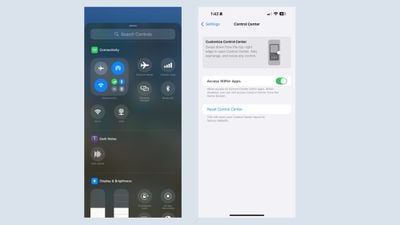The iPhone 16 and iPhone 16 Pro are Apple’s newest iPhones and follow last year’s iPhone 15 and iPhone 15 Pro, but how different are the two latest models, and what exactly does a “Pro” device offer?
Last year, the biggest new differences between the iPhone 15 and iPhone 15 Pro were the titanium frame, A17 Pro chip, and Action button. With iPhone 16 and iPhone 16 Pro, both devices share new features like the A18 chip with support for Apple Intelligence, faster charging, stronger Ceramic Shield front glass, revamped Photographic Styles, the Camera Control, and Wi-Fi 7, but Apple’s “Pro” and non-Pro iPhone models are still fairly different devices.
Our guide helps to answer the question of how to decide which of these two iPhone models is best for you, and serves as a way to clearly see what additional features and upgrades the iPhone 16 Pro brings to the table.
iPhone 16 Plus: 6.7-inch display
iPhone 16 Pro Max: 6.9-inch display
iPhone 16 Plus: Up to 27 hours of battery life
iPhone 16 Pro Max: Up to 33 hours of battery life
iPhone 16 Plus: Starts at $899
iPhone 16 Pro Max: Starts at $1,199
The iPhone 16 Pro offers a large number of upgrades over the standard iPhone 16. With just $200 difference to obtain a display with ProMotion and always-on functionality, a telephoto camera, and longer battery life, many customers will be able to justify getting the iPhone 16 Pro over the iPhone 16. Other differences, such as a titanium frame, slightly larger display sizes, the A18 Pro chip, and a 1TB storage option are notable, but most significant are perhaps the devices’ fundamentally different rear camera setups. The iPhone 16 Pro unlocks many additional camera features, such as ProRAW and 48-megapixel macro photography, and benefits from an entire additional camera in the form of the 5x telephoto for a additional optical focal length option. Due to the scale and breadth of the iPhone 16 Pro’s improvements and features, many customers will be happy to opt for the high-end model.
The standard iPhone 16 still offers many of the iPhone 16 Pro’s most compelling capabilities, such as Apple Intelligence support, the Camera Control, USB-C, Dynamic Island, and a 48-megapixel Fusion camera, at a lower price point. With a generous roster of advanced features, most customers will be happy with the iPhone 16 or iPhone 16 Plus, especially those who want a lighter device, do not care for the “Pro” rear camera setup or features like ProMotion and the always-on display, or cannot justify the $200 to upgrade to the high-end model. The iPhone 16 is a very well designed and balanced device, especially for average customers and those coming from a much older model.






